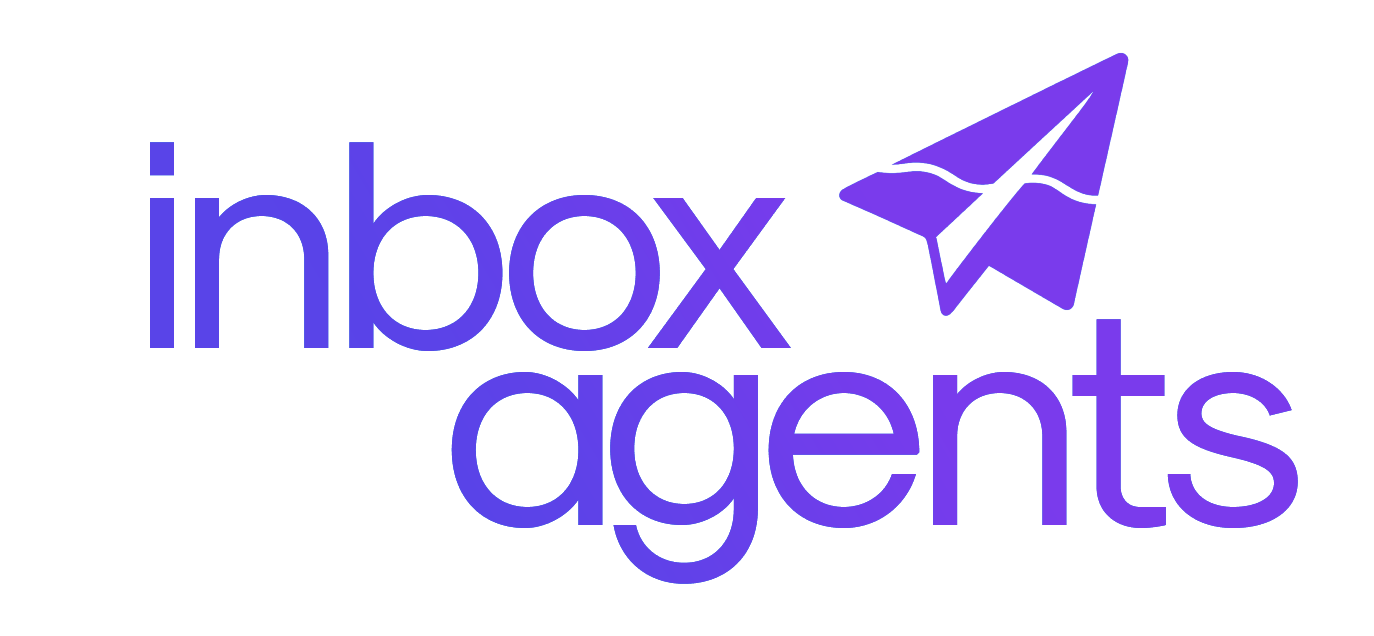
AI Tools for Competitive Benchmarking
AI tools are changing how businesses evaluate competitors, offering faster and more accurate insights by automating data collection and analysis. These tools streamline workflows, provide real-time updates, and scale to fit businesses of all sizes. Here's a quick overview of 12 standout platforms:
- Inbox Agents: Centralizes messaging with AI features like smart replies and summaries.
- Sembly AI: Transforms meeting data into actionable insights.
- ClickUp: Enhances productivity with customizable date formats and reporting tools.
- Ahrefs: Tracks competitor SEO strategies, backlinks, and keywords.
- Crayon: Monitors competitor websites, pricing, and campaigns.
- Semrush: Analyzes SEO, PPC, and content strategies.
- Kompyte: Tracks real-time competitor data with flexible reporting.
- Brandwatch: Monitors social media and online sentiment.
- Owler: Leverages community-driven intelligence for competitor insights.
- BuzzSumo: Analyzes content performance and social media metrics.
- Contify: Delivers market trends and competitor activity via integrations.
- Quid: Processes unstructured data for competitive profiling.
These tools cater to different needs, from SEO and content tracking to messaging and social media monitoring. Choose based on your business goals, budget, and required features to stay ahead in competitive markets.
Create a McKinsey-Level Competitive Analysis with AI!
1. Inbox Agents
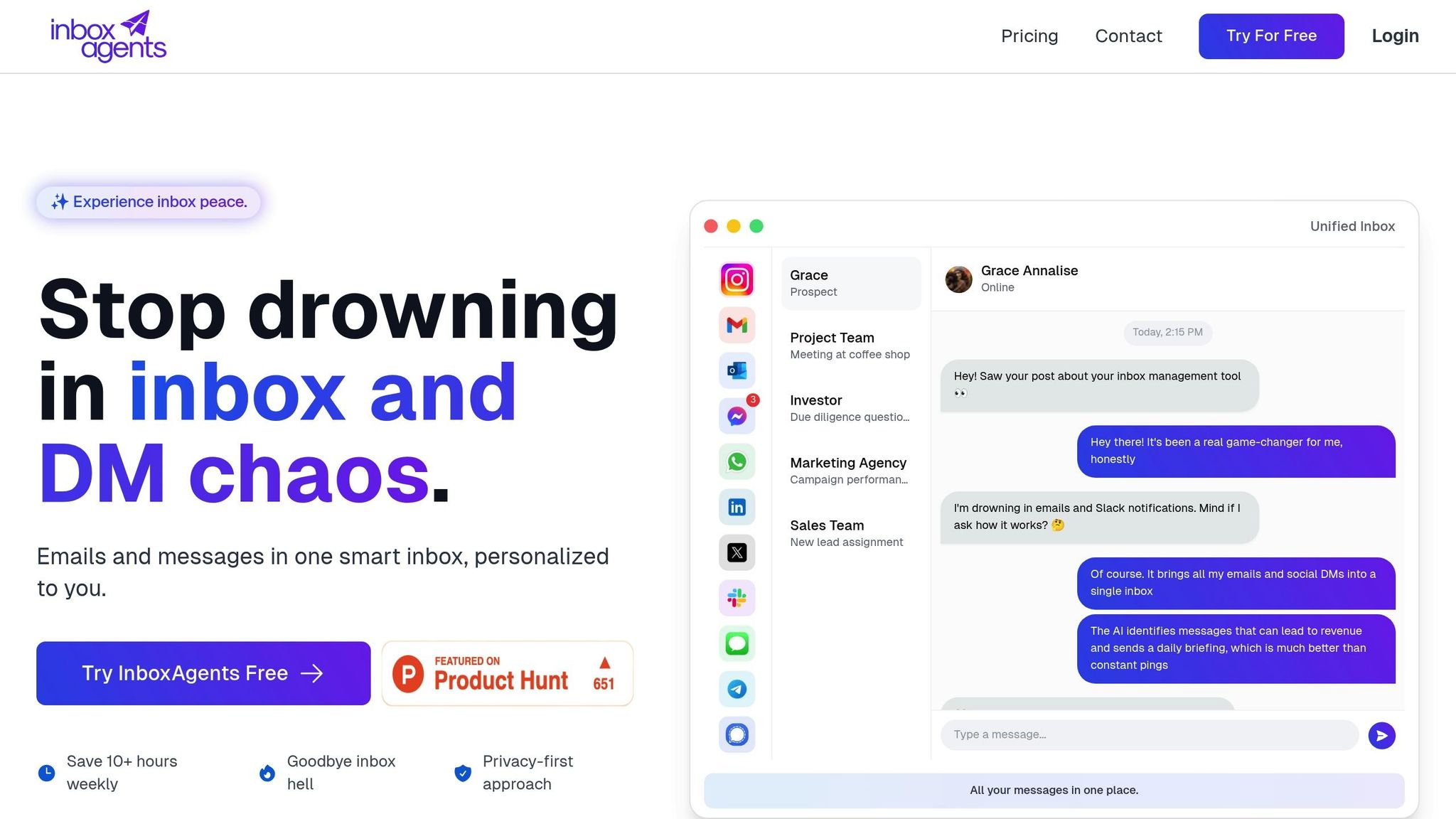
Inbox Agents offers a streamlined messaging platform that brings together conversations from multiple channels, making it easier to manage customer interactions. It combines this unified approach with AI tools and flexible subscription options to cater to various business needs.
Unified Messaging and AI Assistance
This platform consolidates all your messaging data into a single, easy-to-navigate hub. Its AI-driven system takes things a step further by filtering and prioritizing incoming messages, ensuring you focus on what matters most. Features like automated text and audio inbox summaries and smart replies help you stay on top of communications without missing a beat.
Flexible Plans to Fit Your Business
Inbox Agents is designed to grow with your business.
- The Basic plan provides core unified inbox functionality along with simple AI filtering, making it a great choice for individuals or small teams.
- The Professional plan builds on these essentials, adding AI-generated summaries, smart replies, and even tools for managing negotiations - perfect for businesses handling more complex communication needs.
- For larger organizations, the Enterprise plan delivers advanced features like personalized AI responses and robust team management tools, ensuring seamless operations at scale.
With these options, Inbox Agents adapts to businesses of all sizes, offering the tools you need to manage your communications effectively.
2. Sembly AI
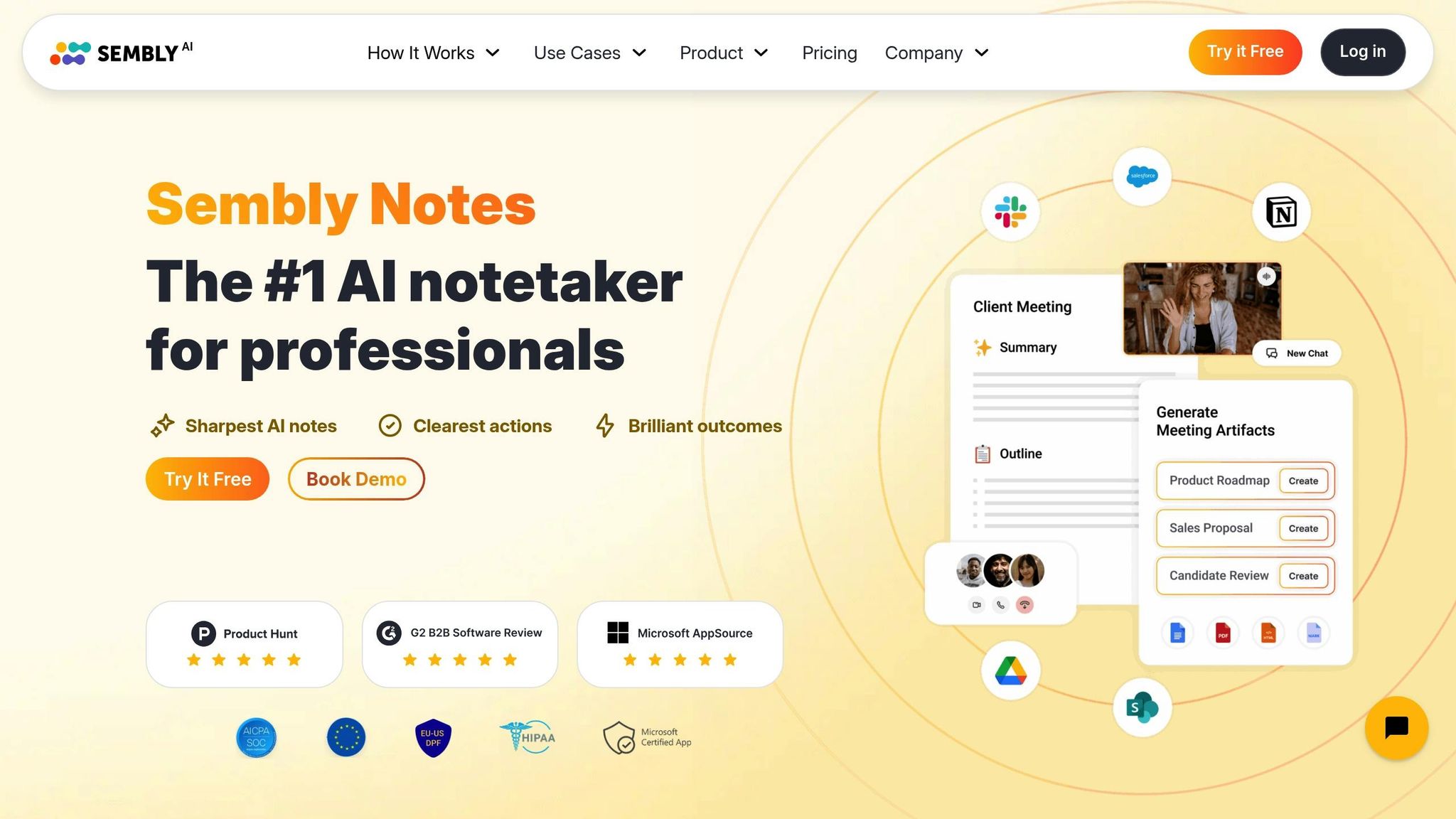
Sembly AI transforms meetings into actionable insights by using advanced transcription and analysis tools. It uncovers valuable information about market positioning, customer sentiment, and competitor strategies. By capturing and organizing key points from internal discussions, Sembly AI turns routine meetings into a goldmine of structured competitive intelligence. It achieves this by tapping into a wide array of internal data sources.
Data Coverage and Sources
Sembly AI is particularly skilled at extracting competitive insights from internal meeting data. It processes voice recordings from various interactions, such as sales calls, customer interviews, focus groups, and support tickets, to identify market trends and competitor mentions. The platform also analyzes internal workshops, brainstorming sessions, and stakeholder meetings. With the Semblian 2.0 add-on, it goes even further, providing deeper insights into competitive dynamics.
3. ClickUp
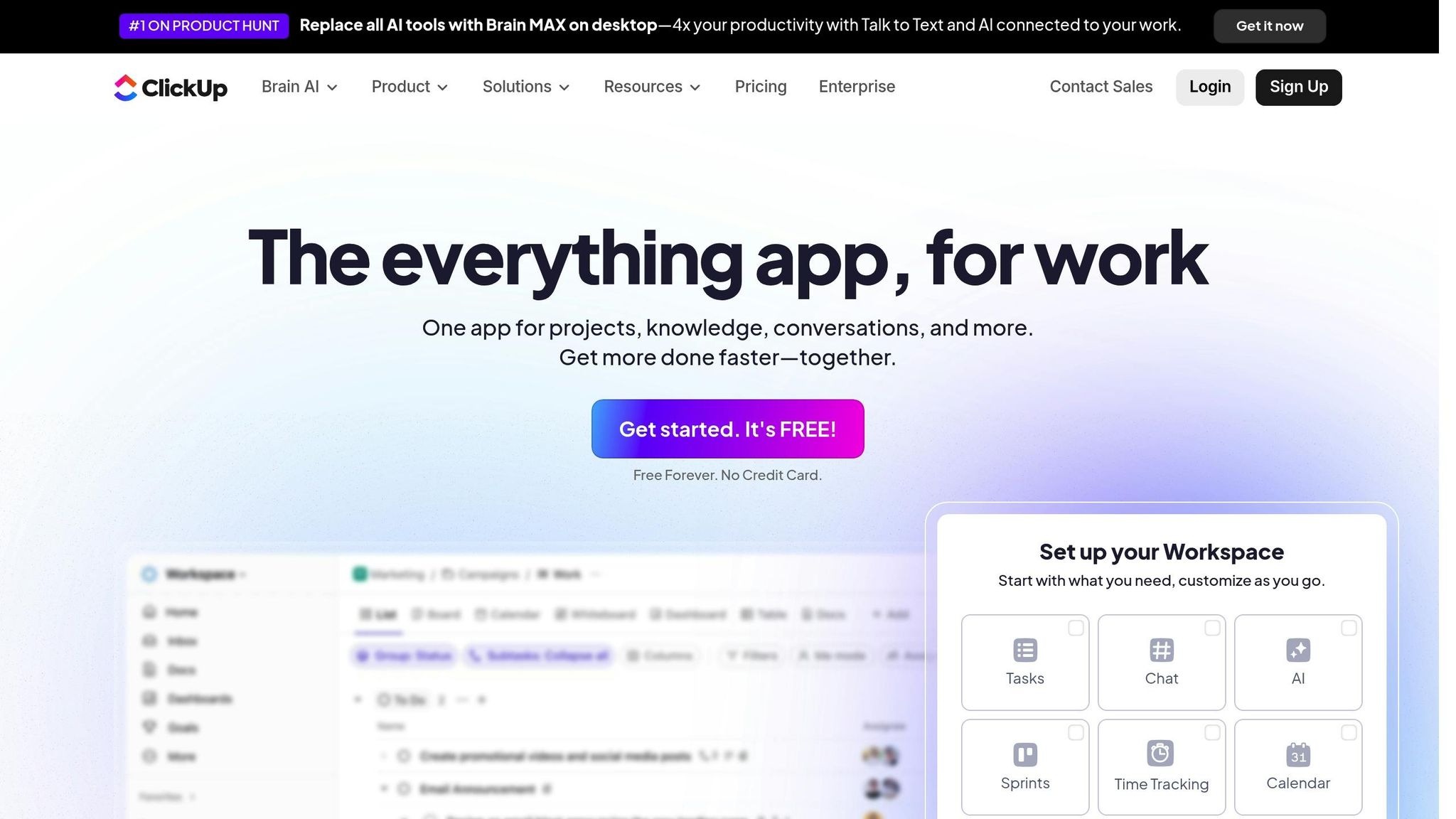
ClickUp is a productivity platform designed to streamline workflows and enhance reporting capabilities. One standout feature is its customizable date formats, tailored to the US standard. Users can set dates in the mm/dd/yyyy format (e.g., 01/15/2021) across all workspaces, including dashboard cards and custom fields. This ensures consistency in formatting throughout an organization, making it easier to manage and interpret data seamlessly. As highlighted in their guidance:
"Set your preferred date and time formats for your Workspace. These changes are made at the account level and will not affect the time and date settings of other users in your Workspace."
ClickUp has also introduced a ClickApp that lets users choose between relative (e.g., "today") and absolute (e.g., "8/21/25") date formats at the workspace level, offering greater flexibility in reporting. Bugra Oktay from ClickUp shared:
"The ClickApp to choose the date formatting is now live! Please feel free to continue providing feedback and suggestions for improvement. We'll keep monitoring." - Bugra Oktay, ClickUp
These customization options also improve ClickUp's natural language processing, enabling the platform to better interpret ambiguous date inputs. This level of adaptability helps teams create clear, precise competitive intelligence reports. By focusing on user-friendly and accurate reporting tools, ClickUp stands out as a reliable addition to any competitive benchmarking strategy, complementing other AI-powered solutions.
4. Ahrefs
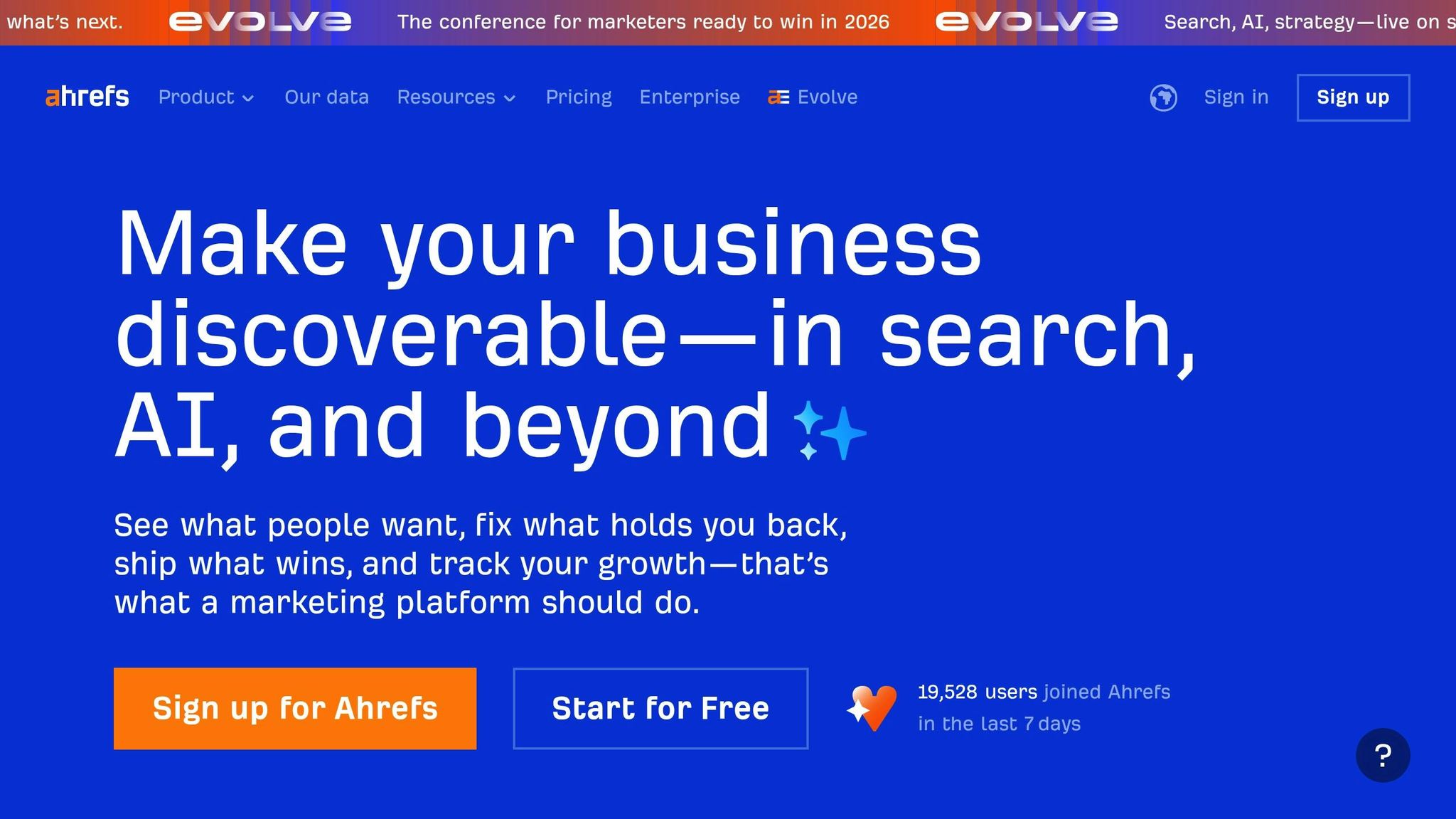
Ahrefs is a powerful SEO and competitive intelligence tool designed to help businesses track and analyze their competitors' online strategies. With features like backlink monitoring, keyword tracking, and content performance analysis, the platform provides a clear picture of what’s driving competitors’ organic traffic. These insights lay the groundwork for the in-depth analyses covered in the following sections.
Data Coverage and Sources
Ahrefs boasts one of the largest live backlink databases, constantly crawling millions of web pages to deliver up-to-date data. This makes it particularly effective for identifying competitor activity across different markets, including detailed insights into US-specific search trends on major engines like Google and Bing.
The platform’s Site Explorer tool offers a deep dive into competitor performance. It highlights organic search traffic, paid search investments, and top-performing content. Users can also pinpoint which keywords drive the most traffic for competitors and identify gaps in their own content strategies.
Integration Capabilities with Business Systems
Ahrefs provides an API that seamlessly integrates with business intelligence and marketing tools, making it easy to incorporate competitive insights into existing workflows. Data can be exported in various formats for use in reports or CRMs. Additionally, Ahrefs works with popular platforms like Google Analytics and Google Search Console, ensuring that benchmarking data fits smoothly into your current processes.
Reporting Formats for US Standards
Ahrefs tailors its reports to US standards, presenting metrics in USD and using the MM/DD/YYYY date format across dashboards and exports. This ensures consistency and clarity for US-based businesses.
Scalability and Customization for US Enterprises
Designed with scalability in mind, Ahrefs supports large enterprises by allowing the management of competitive insights across multiple brands or business units. It can track a vast array of keywords and competitors simultaneously, making it ideal for detailed market analysis. Teams can set up custom alerts to monitor specific competitor activities - like new backlinks or major ranking shifts - so they can respond quickly to emerging threats or opportunities in real time.
5. Crayon
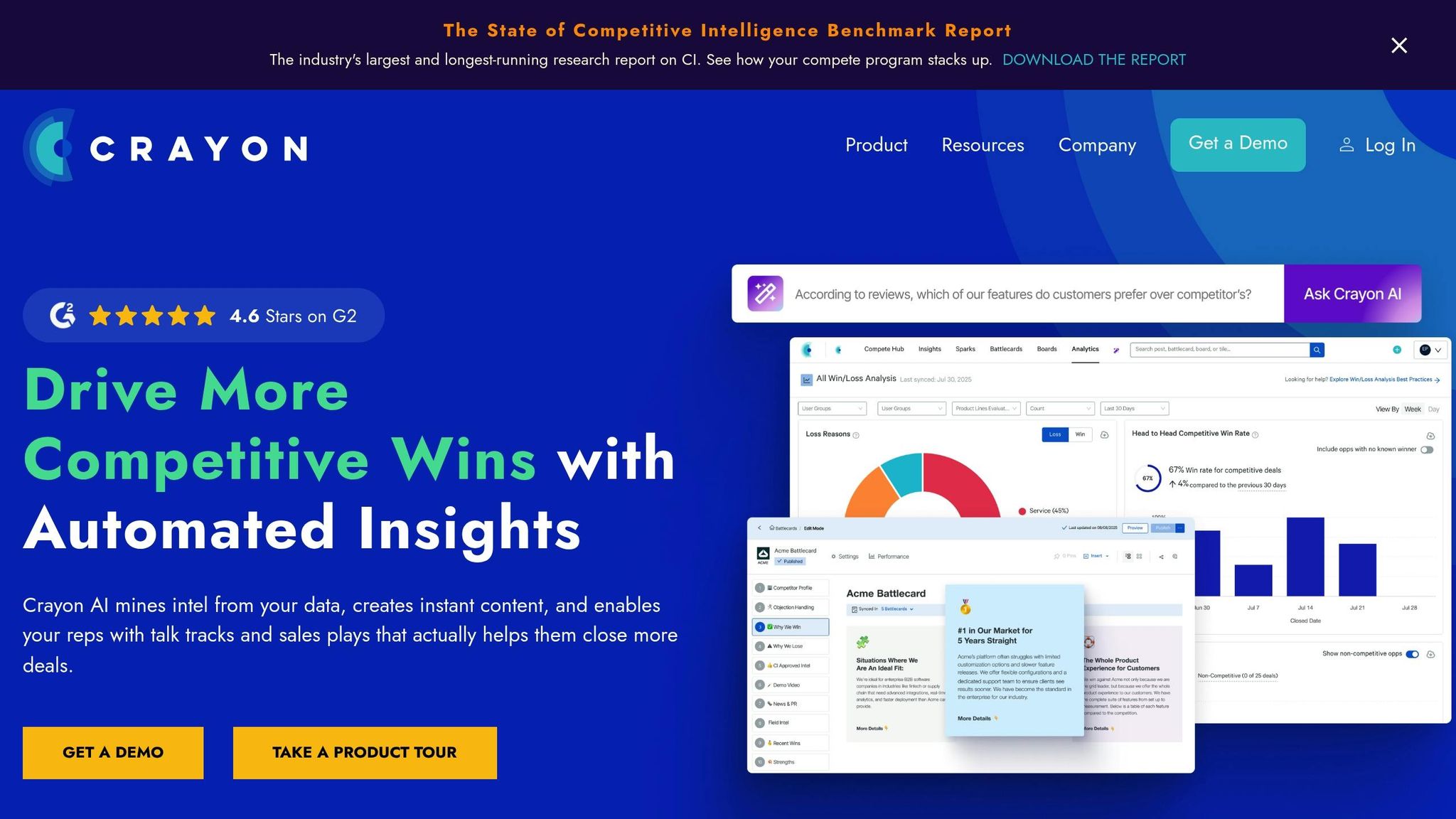
Crayon is a tool designed to keep you informed about your competitors by automating the tracking of website updates, product launches, pricing shifts, and marketing campaigns. It delivers timely insights to help shape strategic decisions.
Data Coverage and Sources
Crayon pulls information from publicly accessible sources like competitor websites, news platforms, and social media. By doing so, it highlights major competitor activities without requiring manual tracking. These sources act as the foundation for integrating Crayon into your workflow.
Integration and Reporting Capabilities
Crayon fits smoothly into your existing processes, offering actionable insights without the need for rigid reporting formats. It simplifies how you access and use competitive intelligence.
Scalability and Customization
Whether you're a small business or a large enterprise, Crayon adapts to your needs. It offers flexible monitoring settings and notifications that can be tailored to align with your industry and regional specifics.
6. Semrush
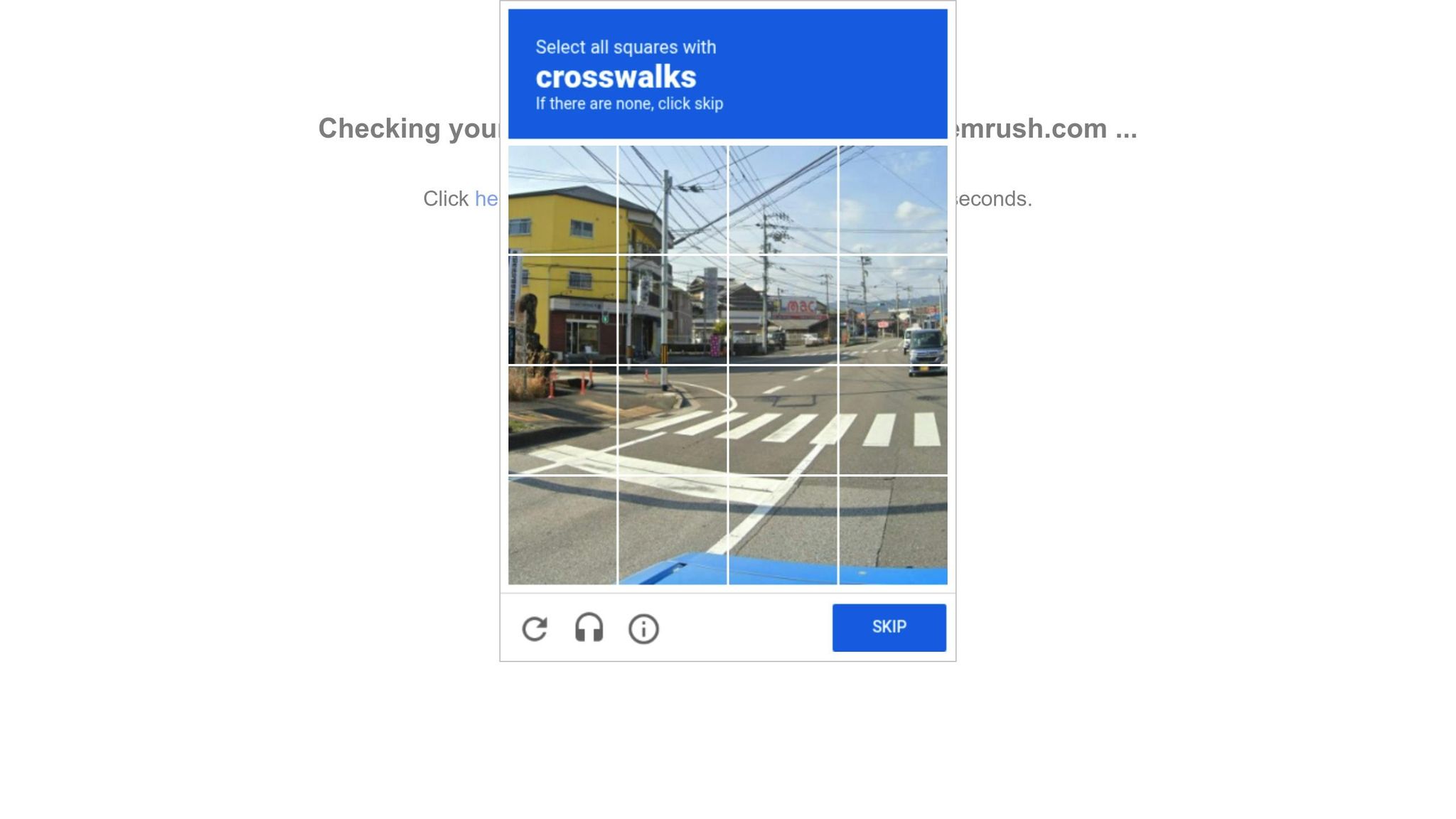
Semrush is a powerful digital marketing platform that helps businesses understand their competitors through detailed insights into SEO, PPC, and content strategies. By analyzing keyword rankings, market positioning, and competitor tactics, it provides a clear picture of the competitive landscape.
Data Coverage and Sources
Semrush gathers data from various sources like search engines, ad networks, social media platforms, and web crawls. This data is used to create in-depth competitor profiles, covering organic search performance, paid advertising campaigns, backlink strategies, and content plans. The platform continuously updates its insights, keeping businesses informed about changes in SEO tactics, ad spending, and content updates.
In addition, Semrush includes traffic analytics, offering estimates of website visitor numbers, engagement rates, and audience demographics. These insights, derived from aggregated clickstream data, integrate smoothly with business systems, making benchmarking efforts more effective.
Integration Capabilities with Business Systems
Semrush doesn’t just provide data - it ensures that data fits into your workflow. With API access, businesses can pull competitive insights directly into their dashboards and reports. Native integrations with tools like Google Analytics, Google Search Console, and Google Ads allow users to compare their performance against competitors without leaving familiar platforms.
The platform also connects with project management tools and CRM systems, making it easier for marketing teams to incorporate competitor analysis into their daily routines. These integrations streamline workflows and ensure competitive insights are actionable.
Reporting Formats for U.S. Standards
Semrush tailors its reporting to fit U.S. standards, using USD for monetary values, MM/DD/YYYY for dates, and standard American number formatting. The reporting dashboard allows users to schedule automated reports, which can be customized for different stakeholders.
Reports are available in PDF, Excel, and CSV formats. When analyzing international competitors, monetary values are automatically converted to U.S. dollars. For agencies, white-label reporting options make it easy to present findings under their own branding.
Scalability and Customization for U.S. Enterprises
Semrush is built to serve businesses of all sizes, from small startups to large enterprises. It offers flexible pricing tiers to match different budgets and needs. Enterprise accounts can track numerous competitors and create custom competitor sets, focusing on specific market segments or regions within the U.S.
The platform includes role-based access controls, enabling teams to manage user permissions effectively. Businesses can set up alerts to track significant changes in competitors’ digital strategies, ensuring they stay ahead in a constantly evolving market.
For larger enterprises, Semrush provides dedicated account management, custom data integration options, and specialized reporting formats to meet industry-specific needs and compliance requirements. This makes it a valuable tool for organizations looking to maintain a competitive edge.
7. Kompyte
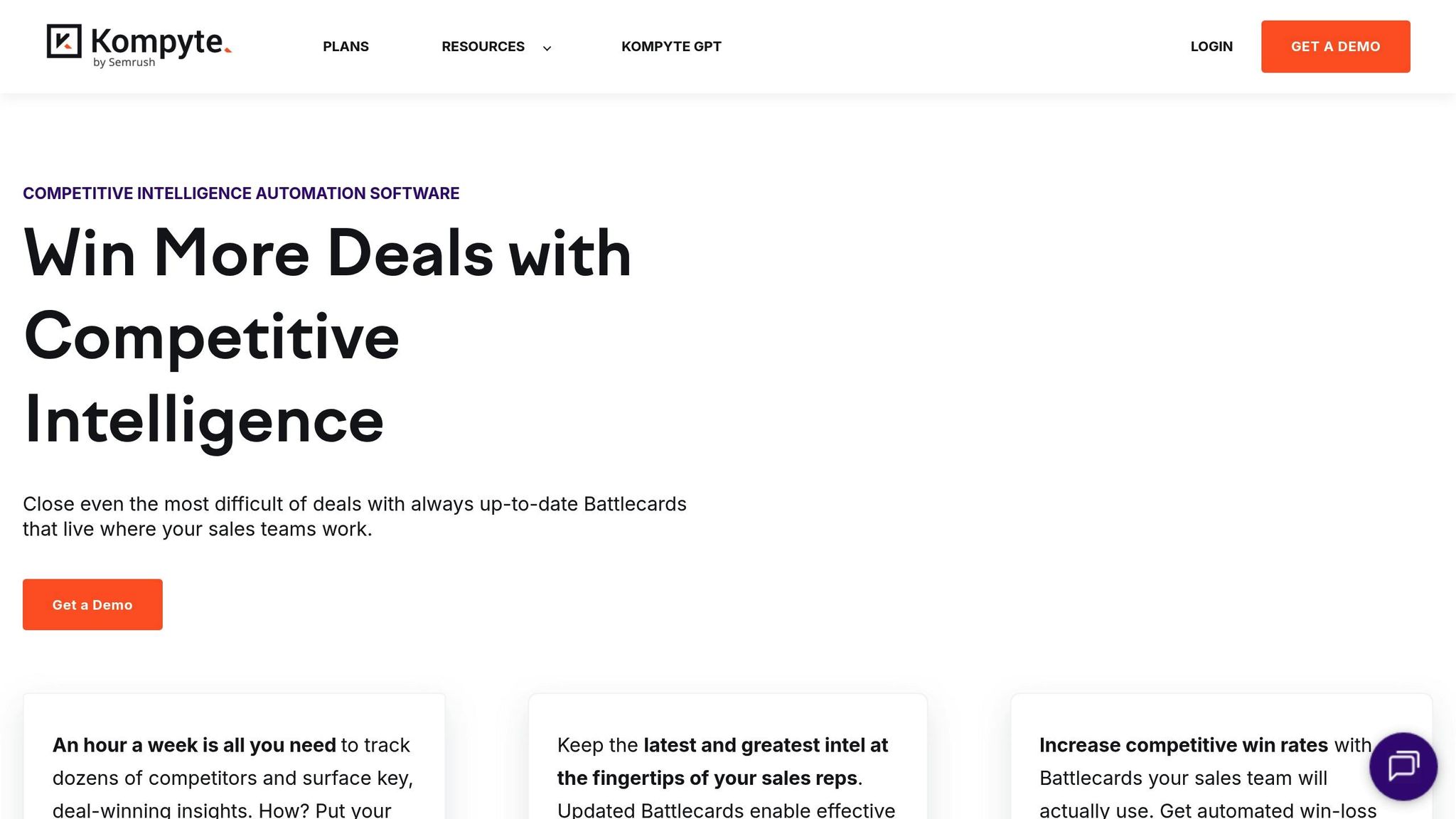
Kompyte keeps an eye on competitor strategies by using real-time data and offering flexible reporting options. It takes competitive benchmarking a step further with its customizable features, building on what other tools provide.
Custom Reporting and Dashboard
With its "Custom Reporting Templates" and "Customizable Dashboard", Kompyte allows teams to tailor performance indicators and competitor data views to their specific needs. These features make it easier to generate reports that align with different business goals.
User Ratings and Feedback
Kompyte holds a user rating of 4.2/5. While its customization tools are powerful, some organizations may need to fine-tune these features further to fully leverage the platform's competitive insights.
sbb-itb-fd3217b
8. Brandwatch
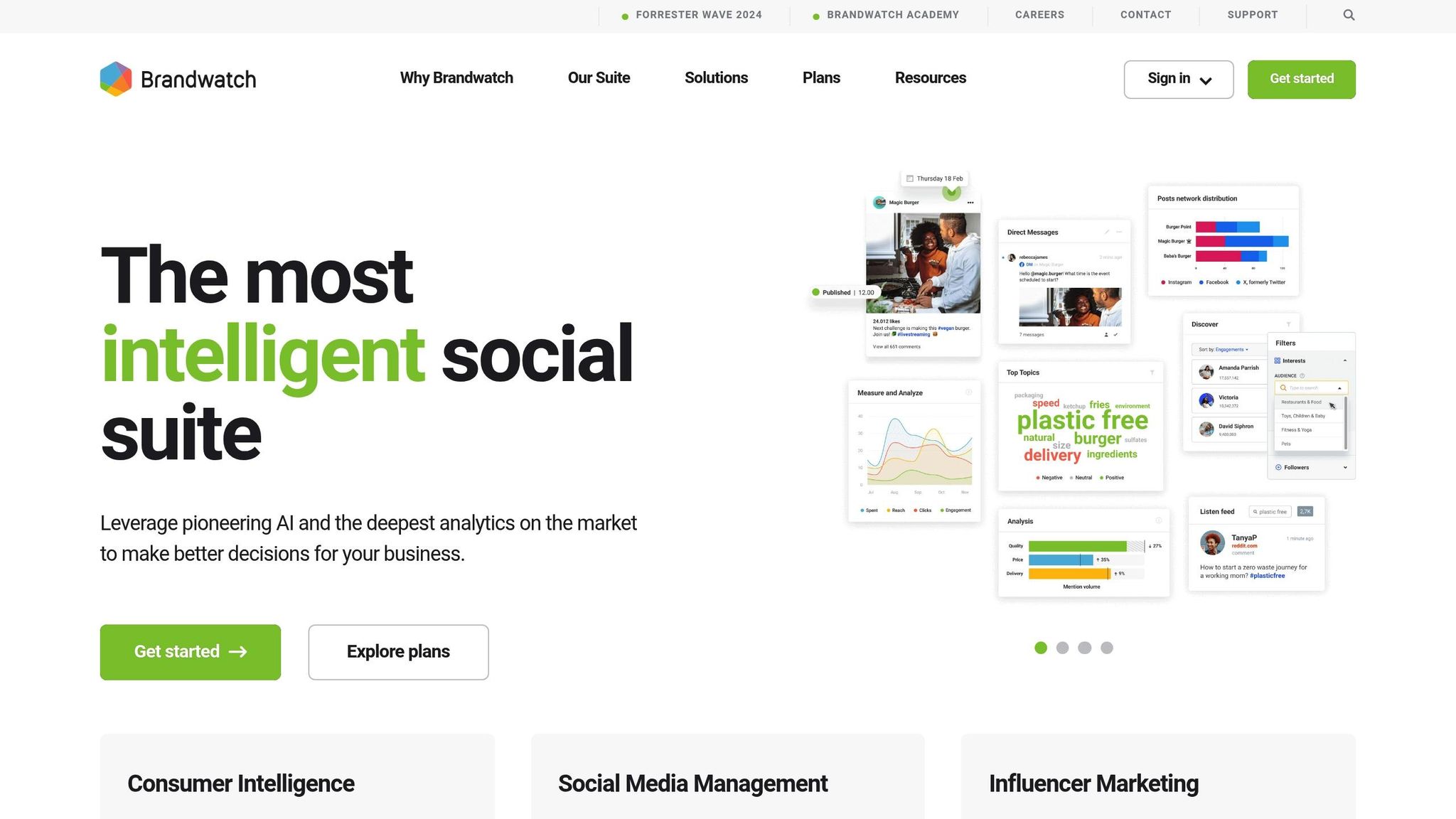
Brandwatch keeps an eye on social media and online conversations, offering businesses a clear view of how competitors are performing and where they stand in the market. By monitoring activity across platforms like social media, news sites, blogs, and forums, it provides valuable insights that help businesses track and measure their competition effectively.
Data Coverage and Sources
Brandwatch covers a wide range of online platforms, including big names like Twitter, Facebook, Instagram, and LinkedIn. It also pulls data from news websites, review platforms, and discussion forums. This extensive reach makes it easier to track competitor mentions, gauge brand sentiment, and spot emerging trends.
The tool’s Boolean search feature lets users create specific queries to monitor competitor campaigns, product launches, or customer feedback. This level of precision helps businesses not only see what their competitors are up to but also understand how audiences are reacting.
Integration Capabilities with Business Systems
Brandwatch provides API access and webhook functionality, making it easy to connect with popular tools like Salesforce, HubSpot, and Tableau. These integrations allow businesses to weave social intelligence data directly into their existing workflows.
Users can schedule custom data exports in formats like CSV, Excel, or JSON, making it simple to incorporate insights into internal reporting. The platform also supports Zapier integrations, enabling automated workflows - such as setting up alerts for specific competitor actions. These features ensure Brandwatch works smoothly with existing systems.
Reporting Formats for US Standards
Brandwatch’s reports are tailored to US business conventions. They use MM/DD/YYYY date formats, USD currency symbols, and comma-separated numbers (e.g., 1,000,000 mentions). Time zones are adjustable to suit different regions.
Automated reporting schedules can be set up to deliver regular updates via email, ensuring stakeholders receive consistent and easy-to-understand summaries of competitive intelligence.
Scalability and Customization for US Enterprises
Brandwatch is designed to grow with businesses, offering flexible plans for smaller companies and robust solutions for large enterprises. For US-based corporations, the platform supports unlimited custom dashboards, role-based access controls, and separate workspaces for different business units or regions.
Advanced filtering options let users analyze data by demographics, geographic location, or influence level. Teams can even create custom sentiment models tailored to their industry’s language, delivering more precise insights into competitive sentiment analysis.
9. Owler
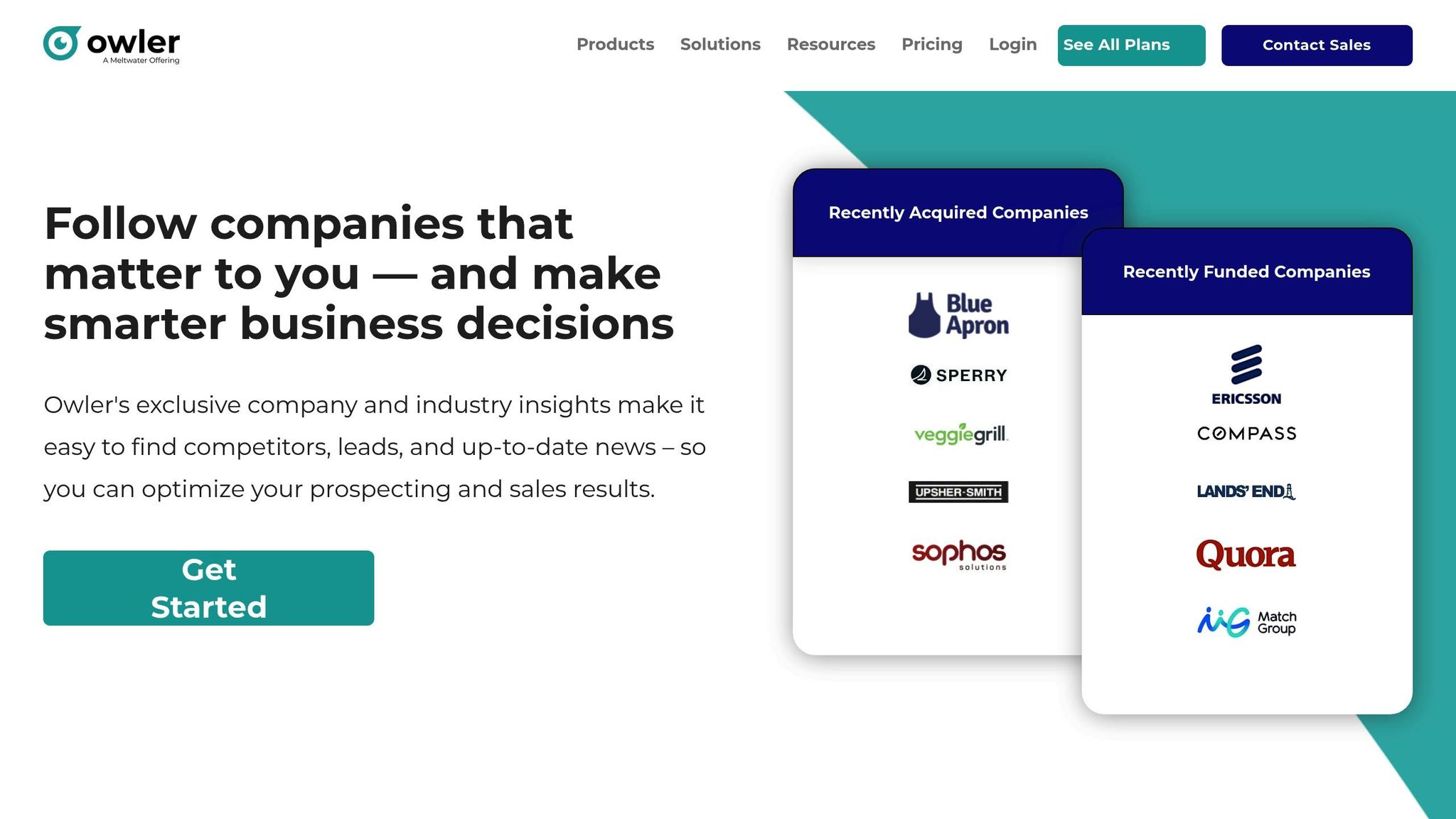
Owler stands out by using insights from a community of professionals to provide competitive intelligence, complementing the more technical features of other AI tools. This platform relies on contributions from business professionals, creating a real-time, dynamic database that keeps its information fresh and reliable.
Data Coverage and Sources
What makes Owler unique is its community-driven approach to data collection. With input from over 5 million professionals, Owler provides data on 13 million companies, 20 million profiles, 150 million verified contacts, 45 million competitive relationships, and receives 500,000 new contributions every month.
"Owler's data is mined directly from the source - over 5M reliable and knowledgeable business professionals. Every day, people just like you contribute insider intelligence about the companies they work for."
Owler also tracks competitor relationships, social media activity, product launches, hiring trends, marketing strategies, partnerships, and client acquisitions. This ensures users receive timely updates and alerts on key developments.
Scalability and Customization for US Enterprises
Owler offers flexible plans to meet different needs. The free plan allows tracking of up to five companies, while the Pro plan ($39/month) provides unlimited company tracking and trend analysis. For businesses requiring deeper insights, the Enterprise plan offers detailed profiles and advanced analytics tailored for the US market. These options allow companies to scale their use of Owler based on their specific goals.
"Owler data is community-powered competitive intelligence, updated constantly in real-time. It is the most current, comprehensive, and exclusive 'living' dataset available on the planet. In fact, Owler data powers many of the other 'data services' you may already be using."
With its real-time updates and customizable plans, Owler is a practical choice for US enterprises navigating competitive industries.
10. BuzzSumo
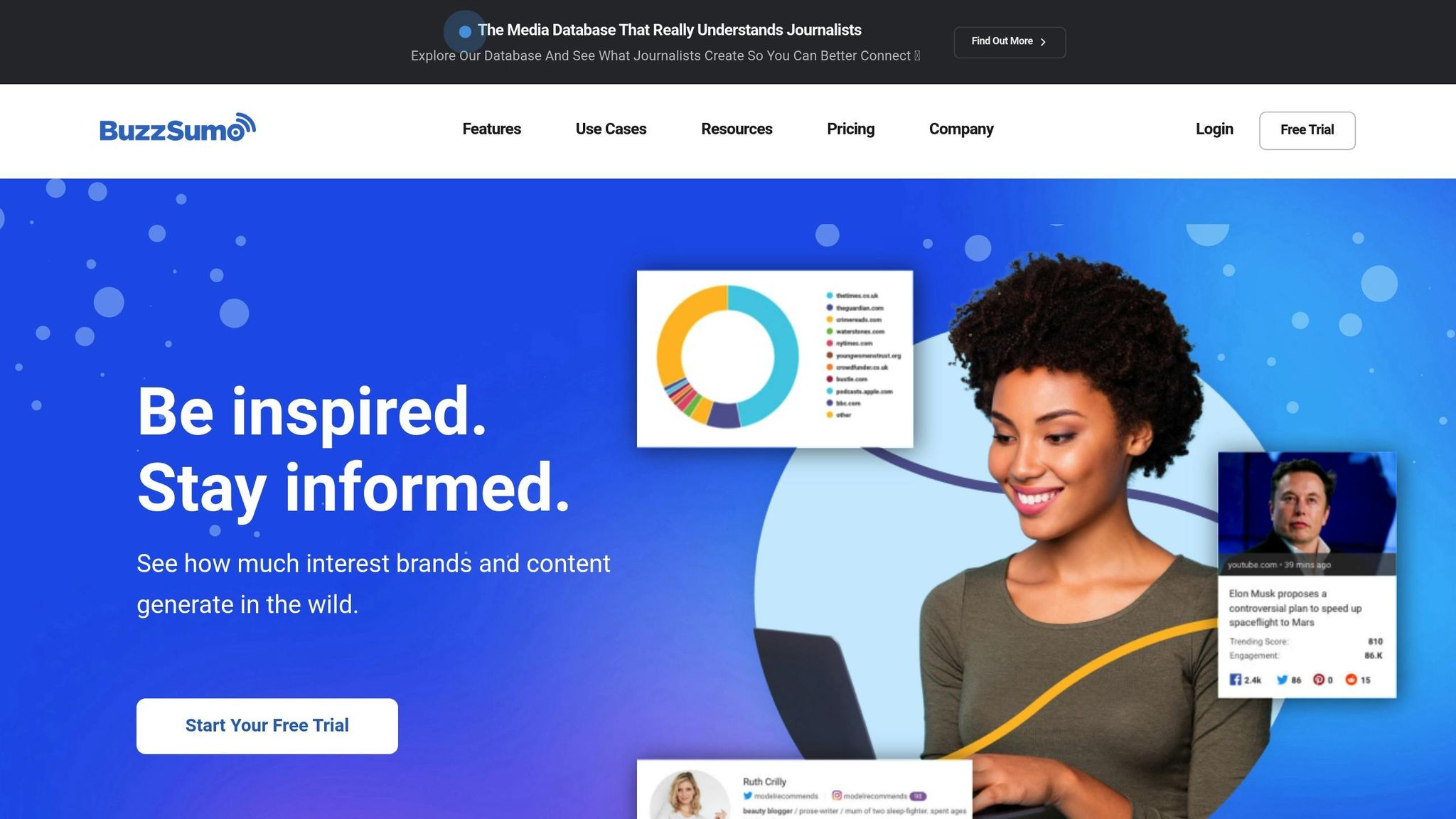
BuzzSumo is a tool designed to analyze how content performs and track social media metrics, making it easier for businesses to benchmark themselves against competitors. It helps companies understand what resonates with audiences, spot trending topics, and keep an eye on competitors' strategies across various social platforms.
Data Coverage and Sources
BuzzSumo gathers data from major social networks like Facebook, Twitter, LinkedIn, Pinterest, and Reddit. By tapping into a massive database of articles and posts, it highlights top-performing content in different industries. It tracks key engagement metrics - such as shares, likes, comments, and backlinks - to pinpoint the topics and formats that drive the most interaction.
The platform also monitors influencer activity, helping businesses identify key players and thought leaders who could impact their competitive landscape. These insights fit seamlessly into marketing workflows, offering actionable data for content strategies.
Integration Capabilities with Business Systems
BuzzSumo supports API access, allowing businesses to integrate its insights directly into their marketing dashboards or business intelligence systems. This makes it easy to align content performance data with broader business goals.
It also works with various marketing tools and CRM systems, simplifying the process of exporting and using data within existing setups.
Scalability and Customization for US Enterprises
BuzzSumo offers flexible pricing plans that cater to businesses of all sizes. For US-based companies, it provides tools to filter content analysis by geographic region, focusing on performance within American markets. Custom alerts keep businesses informed about competitor content launches, trending topics, and brand mentions in real time.
Its scalable design allows businesses to track multiple competitors and analyze performance over extended periods. This helps US enterprises stay competitive and refine their content marketing strategies using reliable, data-driven insights.
11. Contify
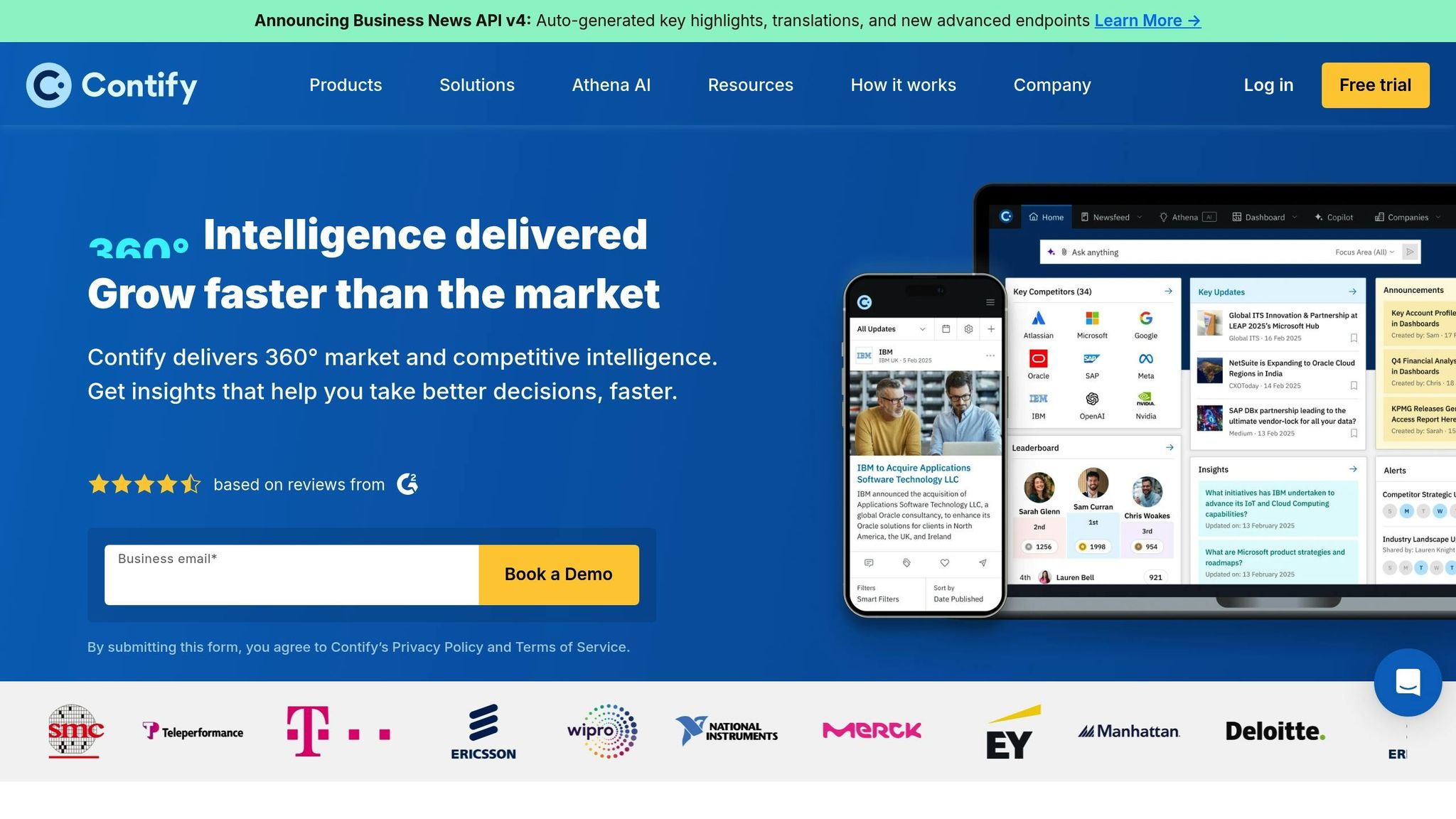
Contify is a competitive intelligence platform powered by AI that helps businesses monitor and analyze market trends, giving them a clear view of competitor activity.
Integration Capabilities with Business Systems
Contify connects seamlessly with many essential tools used by U.S. enterprises, making it easy to integrate competitive insights into daily workflows. It works with CRM platforms like Salesforce (via single sign-on) and provides dashboard widgets for HubSpot. For ERP systems, it offers News APIs to streamline information flow.
Collaboration tools such as Slack, Microsoft Teams, and SharePoint are also supported, alongside business intelligence platforms like Power BI. Sales teams can benefit from integrations with tools like Highspot, Seismic, and Showpad. For secure access, Contify supports single sign-on through providers like Google Workspace, Microsoft Azure, and Okta.
To make insights even more accessible, Contify offers browser extensions for Chrome, Microsoft Edge, and other Chromium-based browsers, enabling real-time sharing of competitive intelligence. It also embeds manufacturing intelligence across tool stacks, delivering a complete picture of market trends and competitor movements straight into the tools your teams rely on every day.
12. Quid
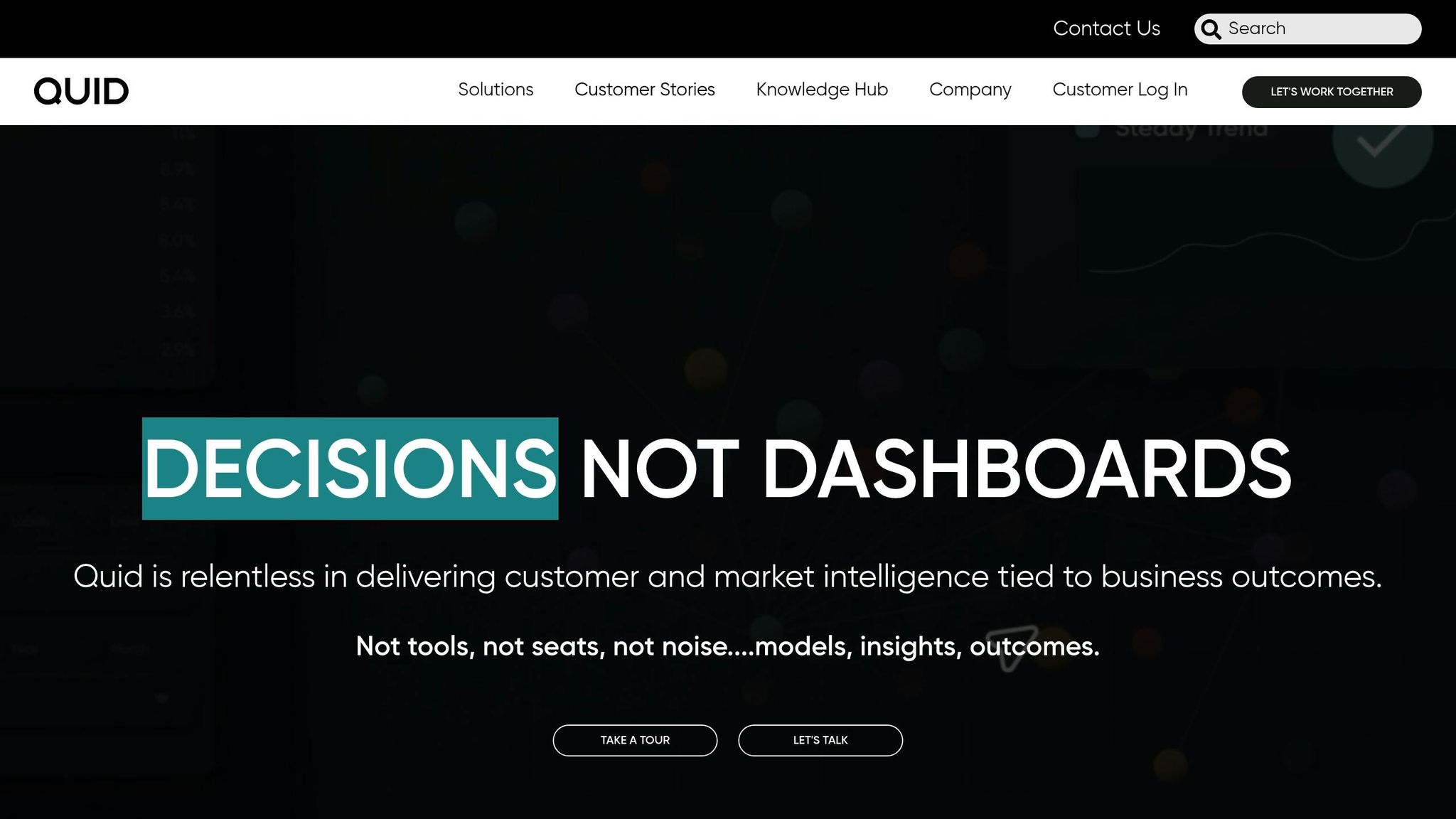
Quid uses AI-powered analytics to turn unstructured data into meaningful insights, helping businesses track competitors and identify emerging trends.
Data Coverage and Sources
Quid pulls information from a wide range of sources, including news outlets and industry reports, to create detailed competitive intelligence profiles. These profiles provide the foundation for businesses to make informed decisions and integrate insights directly into their systems.
Integration and Scalability
Designed for large-scale operations, Quid seamlessly fits into existing workflows and adapts to the needs of growing organizations. It helps teams across multiple departments organize and analyze competitive insights effectively.
Tool Comparison Table
Here’s a quick look at Inbox Agents, an AI-driven messaging tool designed specifically for US businesses:
| Tool | Key Features | Best Use Cases | Limitations | US-Specific Benefits |
|---|---|---|---|---|
| Inbox Agents | Unified messaging interface; AI-powered inbox summaries; smart replies; negotiation handling; personalized responses | Streamlining business communication across multiple messaging platforms | Limited to messaging integrations | Tailored for major US messaging platforms and business tools |
This table gives you a snapshot of how Inbox Agents can simplify your communication processes. When evaluating messaging AI tools, think about how easily they integrate with your existing systems, their pricing options, and how user-friendly they are. Inbox Agents is built to work seamlessly with top messaging platforms used by US businesses.
For a deeper dive into its features and pricing, check out the official Inbox Agents website.
Conclusion
From our detailed reviews, it's clear that AI tools have reshaped how US businesses approach competitive benchmarking. What was once a manual and time-consuming process is now more efficient, offering insights that help companies stay ahead of trends, uncover opportunities, and make smarter strategic decisions.
When selecting a tool, align it with your business goals and budget. For example, a social media-focused startup might find BuzzSumo ideal for content insights, while a larger SaaS enterprise could benefit more from the extensive tracking capabilities of Crayon. Consider factors like your industry, team size, and the level of analysis required to ensure the tool fits your needs.
Scalability is key. A solution that works for a small team of 10 today might not suffice as your team grows to 100. Look for platforms with flexible pricing plans that can grow alongside your business. Many tools offer free trials or freemium versions, giving you the chance to explore their features before committing.
Effective benchmarking often involves combining insights from various sources - whether it's monitoring social media, analyzing SEO, or managing communications with tools like Inbox Agents. When these platforms integrate seamlessly, they provide a complete view of your competitive landscape, leading to better business outcomes.
Remember, the value of AI tools lies in how you act on the insights they provide. Companies that succeed with these tools are those that establish regular review processes, share findings across teams, and adapt their strategies based on what they learn about their competitors.
FAQs
How can AI tools help businesses improve their competitive benchmarking?
AI tools give businesses, big and small, the ability to analyze massive datasets and spot important market trends with ease. They make it possible to dig into competitor strategies, understand customer behavior, and assess overall industry performance - all of which leads to smarter, more informed decisions.
For small businesses, these tools make it easier to pinpoint strengths, address weaknesses, and discover growth opportunities without needing a large budget or team. On the other hand, larger companies can use AI to fine-tune their strategies, anticipate market changes, and stay ahead of the curve. By integrating AI into their operations, businesses can save time, cut costs, and gain an edge over competitors in their field.
What should businesses look for in an AI tool for competitive benchmarking?
When choosing an AI tool for competitive benchmarking, there are a few important aspects to keep in mind. Data security should be a top priority, ensuring that sensitive information remains protected. Next, consider the tool's scalability - can it grow alongside your business? And don’t overlook ease of integration; the tool should work seamlessly with your current systems to avoid unnecessary disruptions.
A clean, user-friendly interface is another must-have, as it simplifies the learning curve for your team. Reliable customer support can also make a world of difference, ensuring any issues are resolved quickly to keep operations running smoothly.
It’s also worth assessing whether the tool delivers accurate, actionable insights that are relevant to your industry. Finally, weigh the costs against the potential return on investment (ROI) and ensure the platform aligns closely with your business goals. Taking these steps can set you up for success when adopting AI for benchmarking.
How do AI tools like Inbox Agents enhance communication and improve customer service?
AI tools, like Inbox Agents, streamline communication by taking over repetitive tasks such as sorting messages, directing inquiries, and crafting instant replies. This automation frees up customer service teams to tackle more complicated or urgent issues, boosting their productivity and effectiveness.
These tools also analyze customer data in real-time, spotting trends, anticipating needs, and addressing potential concerns before they escalate. Features such as automated summaries, intelligent replies, and tailored responses help create smooth, responsive interactions that strengthen customer relationships and build trust.
